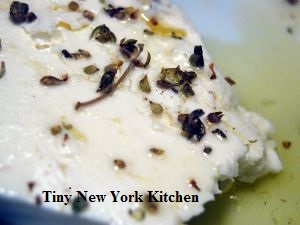
Details
Prep Time: minutes
Cook Time: minutes
Ready In: minutes
Cuisine:
Categories: Cheese, Cooking Basics, Did You Know?, Greek, Salad Dressing, Tips, Vegetarian
Yields or Serves:
Tags: Anchovies, Artichokes, Asparagus, Balkan Countries, Basil, Black Beans, Brine, Brine Bath, Casseroles, Cheese, Cheese Paper, Cherry Tomatoes, Cooking Basics, Cow's Milk Feta, Crumbled Feta Cheese, Did You Know?, Dill, Dressing, Feta, Feta Cheese, Feta Vinaigrette, Fresh Herbs, Goat's Milk Feta, Grapes, Greece, Greek, Greek Food, Greek Salad, Homer, Kosher Salt, Lamb, Milk Bath, Mint, Olive Oil, Olive Oil Rosemary, Olives, Pasta, Pepper, Pita Bread, Pizza, Potatoes, Room Temperature, Salad Dressing, Salt, Sheep's Milk Feta, Shrimp Salad, Soups, Thyme, Tips, Tomatoes, Traditional Greek Feta, Vegetarian, Victoria Hart Glavin, Vinaigrette Dressing, Watermelon & Red Onion Salad, White Wine Vinegar, Wonderful Feta Cheese
Choose the right Feta for your dish!
Goat’s Milk Feta: Goes with pita bread, olives, grapes, cherry tomatoes & pasta
Sheep’s Milk Feta: Goes with watermelon and red onion salad, pizza, lamb & anchovies
Cow’s Milk Feta: Goes with Greek salad, olive oil, rosemary and thyme, black beans, soup or casseroles.
Did you know that Traditional Greek Feta is made with a combination of sheep and goat milk?
Feta is a white, semi-firm, crumbly, salty cheese made from sheep’s or goat’s milk (sometimes cow’s milk) and cured in brine. Originally from Greece, feta translates to “slice,” for one of the stages in its making. The word came into English around 1956. Feta is one of the world’s oldest cheeses. It has been made in Greece and other Balkan countries for centuries. Homer wrote about it, describing how the gods made the cheese.
The finest feta cheese should be purchased direct from its brine bath. If it is prepackaged, it should have some of the brine in the packaging to keep it moist. Feta cheese is best when eaten fresh, so always check the date. If you will not be consuming it immediately, store the feta in a brine or milk bath in the refrigerator. The milk bath will reduce the saltiness and help keep the cheese moist and last for up to 3 months. Freezing is not good for feta cheese. Feta that has been aged in barrels and sold straight from the barrel may be wrapped in a lightweight paper. You may want to wrap your feta in a plastic bag or plastic wrap and store in the fridge however there is some controversy about storing cheese in plastic. You may want to keep the feta in the paper, even when the paper gets soggy from the cheese moisture. Allow at least 30 minutes for feta to come to room temperature, to fully enjoy its rich, tangy flavor and creamy texture.
If you are one who doesn’t like feta’s salty taste then you may want to soak the cheese in fresh water to leach out some of the salt or tone down the salt in dishes that feta is used in. This allows the cheese to supply the salt.
Feta Vinaigrette
The slight sharpness of the feta combined with fresh green herbs makes a versatile vinaigrette dressing that goes beautifully with lightly steamed asparagus or sliced tomatoes as well as artichokes. It is a lovely dressing on potatoes, pasta or shrimp salad as well.
INGREDIENTS
1/4 Cup White Wine Vinegar
1 Teaspoon Minced Fresh Basil
1 Teaspoon Minced Fresh Dill
1 Teaspoon Minced Fresh Mint
1/2 Cup Finely Crumbled Feta Cheese
1/2 Cup Olive Oil
1/4 Cup Safflower Oil
1/4 Teaspoon Kosher Salt
1/4 Teaspoon Freshly Ground Pepper
In a small size bowl, whisk together the vinegar, herbs and cheese. Add the olive oil and safflower oil in a slow thin stream. Whisk constantly until combined and emulsified. Add the kosher salt and pepper. Set aside until you are ready to use. Cover and refrigerate. It will keep for up to 1 week. Stir or shake well before using. Makes 1 cup.





